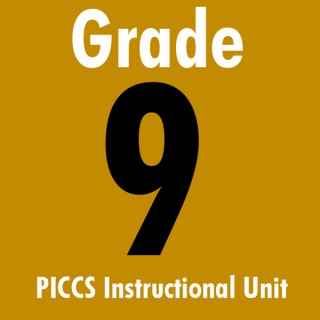
Grade Three Instructional Units
Follow Grade Three Instructional UnitsConnecting to Apple Music.
- Oct 10, 2014 LATEST EPISODE
- infrequent NEW EPISODES
- 11 EPISODES
More podcasts from PICCS
Latest episodes from Grade Three Instructional Units

This unit connects the third grade ELA Common Core Learning Standards to College and Career Readiness Skills (i.e. working in small groups, communicating effectively with peers, expressing oneself and supporting opinions). Students are required to write opinion pieces on topics or texts, supporting a point of view with reasons as stated in standard W.3.1.

This unit connects the third grade ELA Common Core Learning Standards to College and Career Readiness Skills (i.e. working in small groups, communicating effectively with peers, expressing oneself and supporting opinions). Students are required to write opinion pieces on topics or texts, supporting a point of view with reasons as stated in standard W.3.1.

This unit connects the third grade ELA Common Core Learning Standards to College and Career Readiness Skills (i.e. working in small groups, communicating effectively with peers, expressing oneself and supporting opinions). Students are required to write opinion pieces on topics or texts, supporting a point of view with reasons as stated in standard W.3.1.

This unit connects the third grade ELA Common Core Learning Standards to College and Career Readiness Skills (i.e. working in small groups, communicating effectively with peers, expressing oneself and supporting opinions). Students are required to write opinion pieces on topics or texts, supporting a point of view with reasons as stated in standard W.3.1.

This unit connects the third grade ELA Common Core Learning Standards to College and Career Readiness Skills (i.e. working in small groups, communicating effectively with peers, expressing oneself and supporting opinions). Students are required to write opinion pieces on topics or texts, supporting a point of view with reasons as stated in standard W.3.1.

The main purpose of this unit is to teach multiplication using multiple groups, equal groups, equal sharing, and equal grouping. The focus of the unit was to model and solve multiplication and division stories as well as multiplication and division learned in second grade. The expectation in third grade is that scholars be able to understand the concept of repeated addition in relation to multiplication and begin to touch on division.

The main purpose of this unit is to teach multiplication using multiple groups, equal groups, equal sharing, and equal grouping. The focus of the unit was to model and solve multiplication and division stories as well as multiplication and division learned in second grade. The expectation in third grade is that scholars be able to understand the concept of repeated addition in relation to multiplication and begin to touch on division.

The main purpose of this unit is to teach multiplication using multiple groups, equal groups, equal sharing, and equal grouping. The focus of the unit was to model and solve multiplication and division stories as well as multiplication and division learned in second grade. The expectation in third grade is that scholars be able to understand the concept of repeated addition in relation to multiplication and begin to touch on division.

The main purpose of this unit is to teach multiplication using multiple groups, equal groups, equal sharing, and equal grouping. The focus of the unit was to model and solve multiplication and division stories as well as multiplication and division learned in second grade. The expectation in third grade is that scholars be able to understand the concept of repeated addition in relation to multiplication and begin to touch on division.

This is a 6-week unit for 3rd grade CORE on comparing and contrasting life in New York City to life in Japan. The class reads and takes notes in groups on various non-fiction trade books on both life in New York City and Japan. Students then take these notes and create comparison notes to help identify the similarities and differences between the ways of life in the two countries.

This is a 6-week unit for 3rd grade CORE on comparing and contrasting life in New York City to life in Japan. The class reads and takes notes in groups on various non-fiction trade books on both life in New York City and Japan. Students then take these notes and create comparison notes to help identify the similarities and differences between the ways of life in the two countries.

















